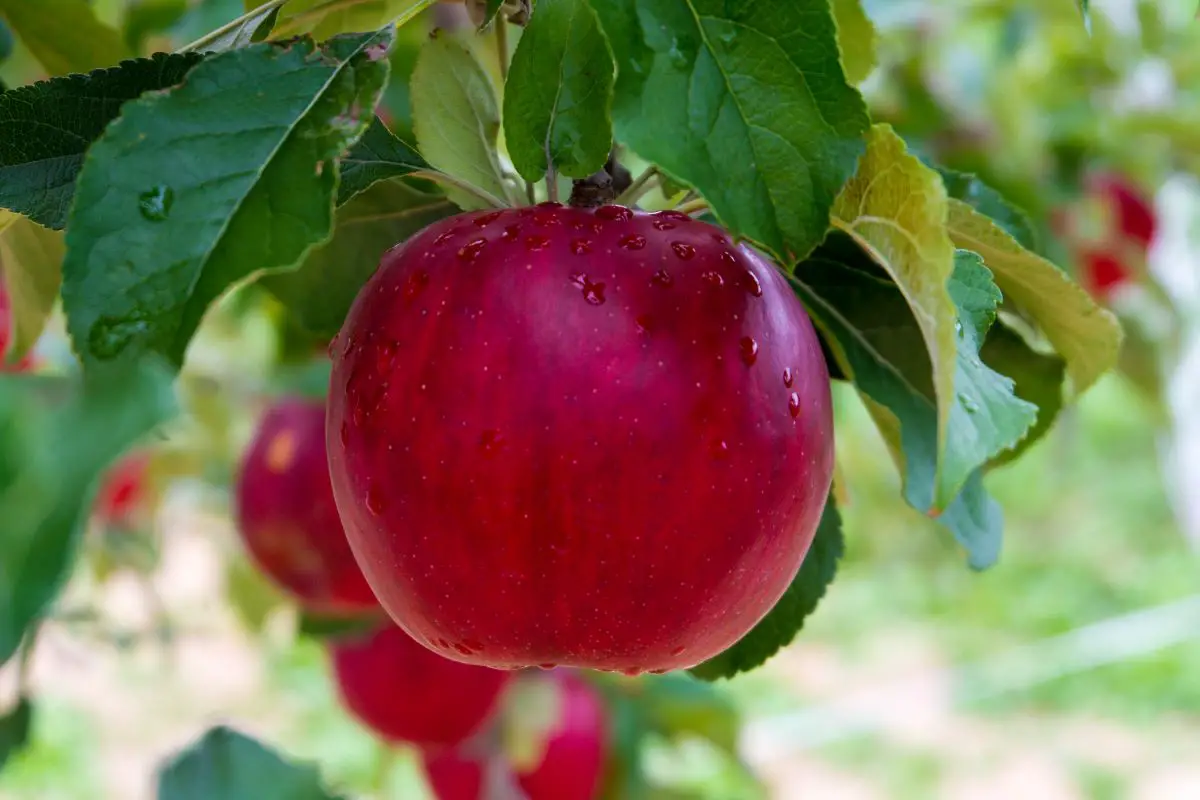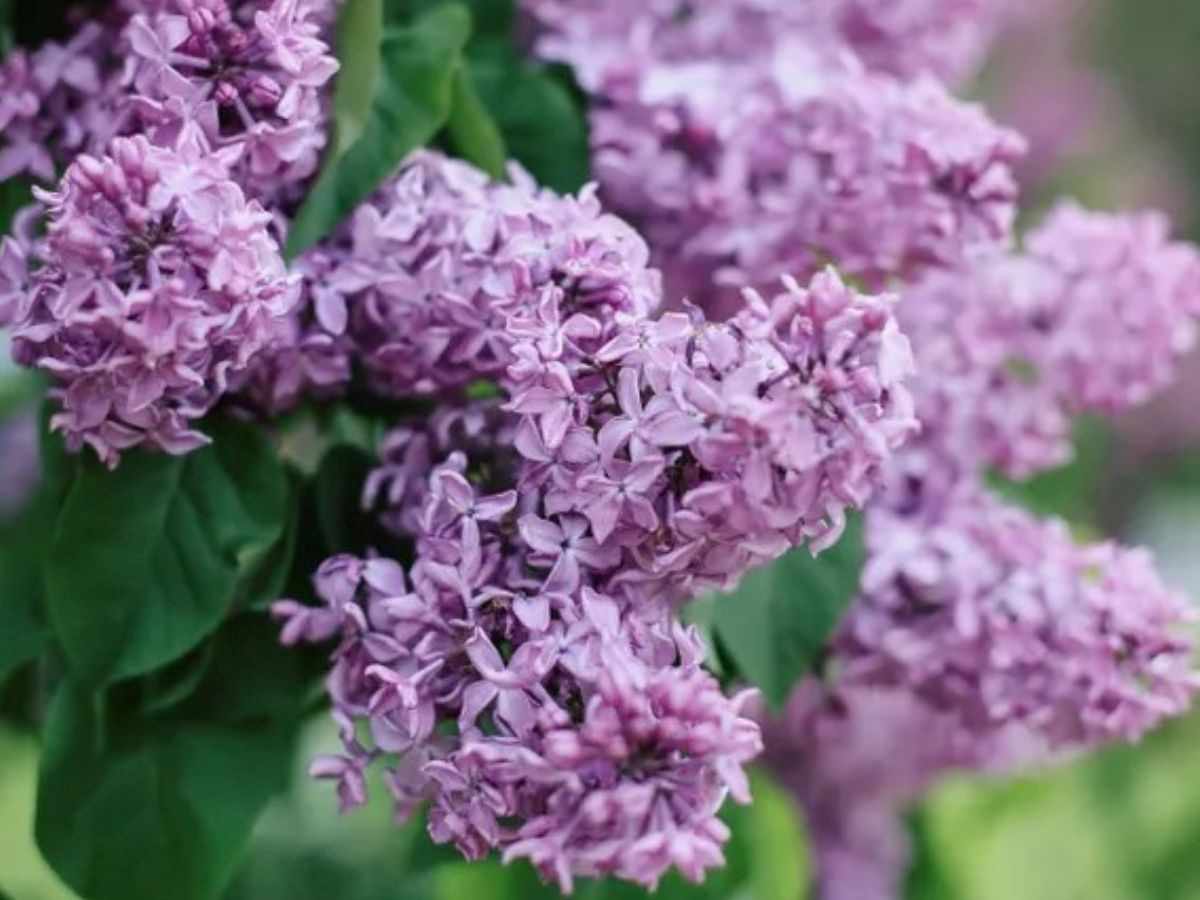Understanding how to prune apple trees is important for both fruit production and tree health. It might seem like such an intimidating task, but it can be made easy with these few simple steps and guidelines.
Disclosure: This post contains affiliate links. As an Amazon Associate I earn from qualifying purchases.
What Time of Year Should Apple Trees be Pruned?
The ideal time to prune apple trees is late winter – early spring when there is no sign of new growth, and the tree is still dormant. Prune apple trees on days that do not go below freezing, and when there is no chance of rain.
If extreme freezing temperatures are expected, delay the pruning time to a milder later winter day.
Pruning apple trees on a rainy day can cause rot to occur in freshly pruned branches. It can also make the tree more susceptible to insect damage because the rain softens up the fresh cuts and allows an easier time for insects to barrow through the branches.
Pruning apple trees should be done on a mild, non rainy day in order to allow an easier time for the fresh cuts to dry up and heal.
You can also prune apple trees in summer to shorten branches that have grown too tall, or to allow more air to circulate inside the apple tree. Air circulation is extremely important to prevent insects and diseases.
Late fall can also be a time to prune your apple trees, especially if you did not get to pruning them in late winter, early spring.

What Shape Should Apple Trees be Pruned?
There are three main shapes that apple trees can be pruned into. Open Vase or center, modified central leader, and central leader. These names can seem pretty intimidating at first, but do not worry, we will talk about each shape in details.
Open Vase or Center
Pruning apple trees using the open vase method requires cutting off any center branches. The branches that are left on the tree are all outward facing branches with no vertical growth.
This method allows for plenty of air circulation, great insect control, and optimal height control.
The open vase method will give you low growing trees that are easy to reach. The main thing to keep in mind when using this method is to cut off any vertical branches.
Modified Central Leader
The idea behind this method is to have multiple branches that are the “leader” rather than one central leader branch.
To achieve a modified central leader, you need to allow the tree to reach a height of about 6 to 10 feet. Then you can top off the central leader branch. The central leader is the main branch that extends vertically from the middle of the tree.
This can of course vary, depending on how tall you want your tree to be. You can top off the central leader at a shorter height if you choose to.
Topping off, or cutting the central leader will cause more branches to branch out off the central leader creating the “multi-central leader” effect.
While using this method, you want to cut off any competing branches that are too close to each other, crisscrossing, and any branches that are at an angel that is less than 45 degrees, more than 60 degrees, or super wide branches.
This method allows for great air circulation. It also allows the tree to grow more vertically at a lower height, while also preserving it’s natural tree shape.
The modified central leader is the method that we use for most of our fruit trees.
Central Leader
The central leader method allows for one main central leader branch to grow vertically in the center of the tree. Any competing branches that are trying to grow vertically to become a central leader, should be removed, or topped off and allowed to grow in a direction that is away from the center of the tree.
The central leader method is said to be the best for fruit production, but is not recommended for the home gardener for multiple reasons.
A fruit tree that is growing in a central leader method is more susceptible to blight, and is much more difficult to prune and harvest due to it’s height.
Apple trees can grow up to 30 feet tall or more. So when an apple tree is pruned following the central leader method, remember that it can grow too large for you to care for. Unless you are not a home gardener, or if you have the proper tools to care for it.
Pruning apple trees using the central leader method will allow the tree to grow in a conical form. Sort of like a Christmas tree. The top branches should be shorter than the branches below them.
As any other method, branches that are too close to each other, competing for sun, growing at a very wide angle, or a narrow angle that is less than 45 degrees, and branches that are growing into the center of the tree or crisscrossing with other branches, should be removed.
Can You Cut the Top off an Apple Tree?
Cutting the top off an apple tree can cause the tree to branch out in multiple directions. This method is used in both the modified central leader method, and the open vase method. So the answer is yes, you can cut the top off an apple tree if you were following any of these two methods in pruning your apple trees.
How Much Can You Cut Back an Apple Tree?
The rule of thumb when pruning an apple tree, or any tree and shrub is to not cut back more than 25 to 30 percent off that tree or shrub. Any more will cause an excessive amount of branching, especially vertical branching. This happens because the tree is trying to create more leaves in order to receive energy from sunlight.
When you cut off too much off an apple tree or any fruit tree, naturally, the tree will not have enough leaves to gather sunlight and produce energy. So it’s natural biological instinct is to produce more leaves through producing branches.
Too many branches and leaves will cause the tree to be susceptible to mold, rot, blight, insects, and diseases.

Do Apples Grow on New or Old Wood?
Apples grow on old wood, so when pruning apple trees for fruit production, you want to keep plenty of older branches in order to have some fruits.
Apple fruits in early spring and late winter, will appear as a large bud sitting over a small stick that is coming off of a branch. These are known as spurs. So if you want fruits, do not prune the spurs, or the branches that they are sitting on.
The Main Things to Look for When Pruning Apple Trees
First you need to look for the three D’s. What this simply means is that you need to prune off any dead, damaged, or diseased branches.
Always use sharp pruners when pruning anything. Clean off your pruners using rubbing alcohol. You’ll want to do this when you’ve finished pruning one tree and you are moving off to the next, or when you have diseased branches, and you are moving on to another branch from a diseased branch.
Prune any crisscrossing branches, leaving the branch that is at a 45 to 60 degree angle, the branch that is heading away from the tree, and if possible, the stronger branches,
Also, prune any low branches that are below 3 feet in height.
And finally, prune off suckers which are the branches that extend around the bottom of the tree trunk.
On each branch, you will find a fat circular shape that surrounds the bottom or the beginning of the branch where it connects to another branch. This shape is known as the collard. You want to prune all branches about an 1/8 of an inch to a 1/4 inch away from the collard in order to allow the cut to heal properly.
Do not cut into the collard of the branch. The collard contains compounds that allow the cut to heal quickly. If you cut into it, you will be removing those compounds that allow the tree to heal. This will cause the tree to heal much slower, leaving room for barrowing insects and disease to occur.
Tools that You Will Need When Pruning Apple Trees
- Hand pruners
- Loppers
- Ladder
- Rubbing alcohol in a spray bottle

MORE GARDENING AND RECIPE RELATED TOPICS
How To Make Freeze Dried Strawberries
Gluten Free Brownie Recipe – Fudge Brownies
Disclosure: Some of the links in this post are “affiliate links”. This means if you click on a link and purchase the item, I will get an affiliate commission. It will not cost you any extra money, but it will help me pay for this website, and it will help me to keep providing you with helpful articles such as this one. I only post links to products that I personally use and love, or to products that I wish I could have, and that could be of value to you. The information that I provide you with, my blog, videos, and many resources are free.





Be the first to reply